My firsthand experience confirms that sheep wool is a true gem when it comes to growing vegetables…
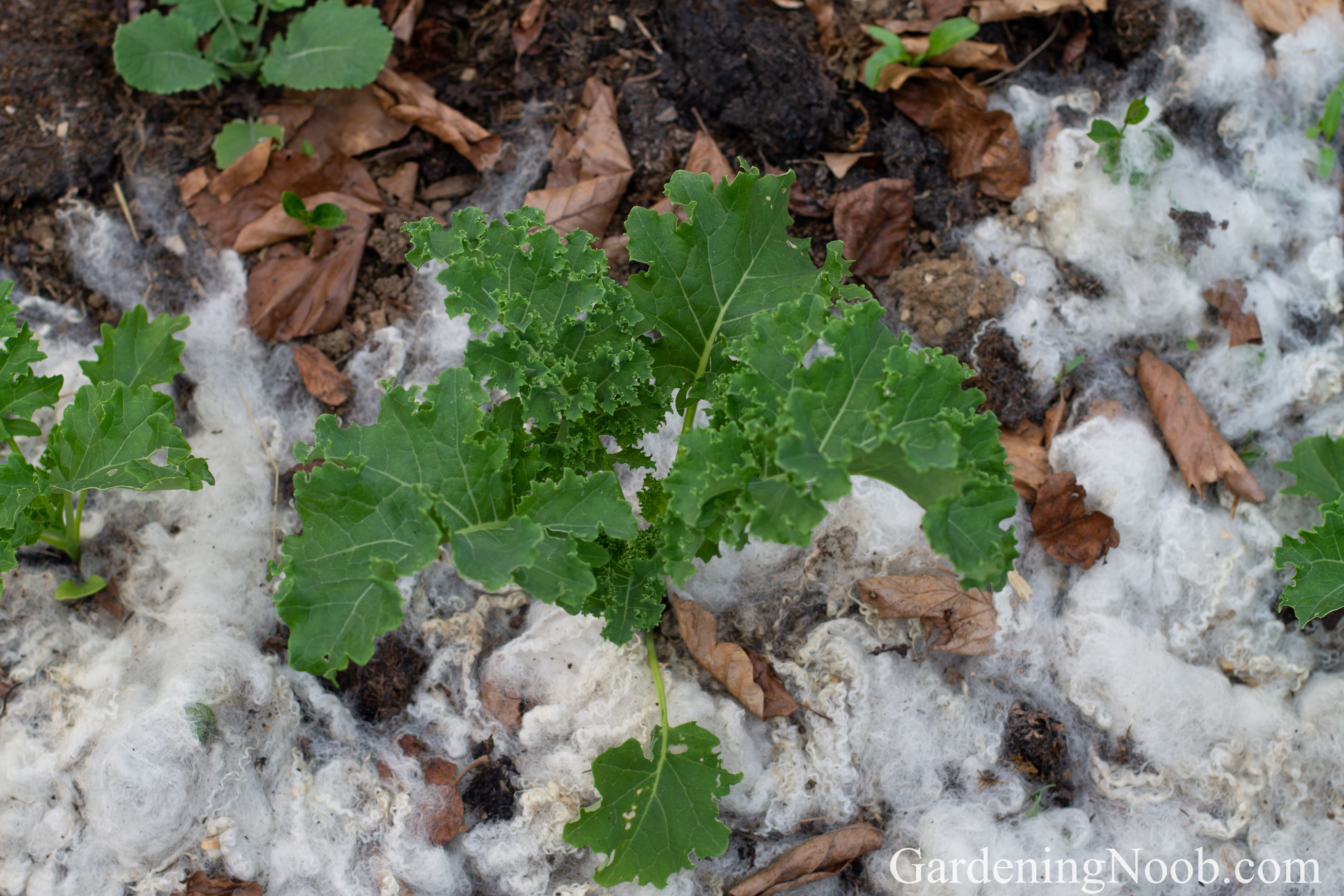
I have been experimenting with sheep wool in my vegetable garden for the past two gardening seasons. And now that I have more firsthand experience with it, I figured it would be a good time to write a short report on it…
So, if you are wondering whether sheep’s fleece is worth using in the garden – and how to use it to get the most out of it – I invite you to keep reading. I’m going to share my experiences with it and hopefully answer all your questions about the use of this precious organic material in vegetable gardening along the way. Let’s start!
Does it work?
It was early in the spring of year 2020 when I first heard that sheep wool fleeces could be useful for growing vegetables. Since none of my fellow gardeners had been using it at the time (this still hasn’t changed), I had no clue what to expect from it and whether it works or not. Nonetheless, I found the idea intriguing and decided to just run with it…
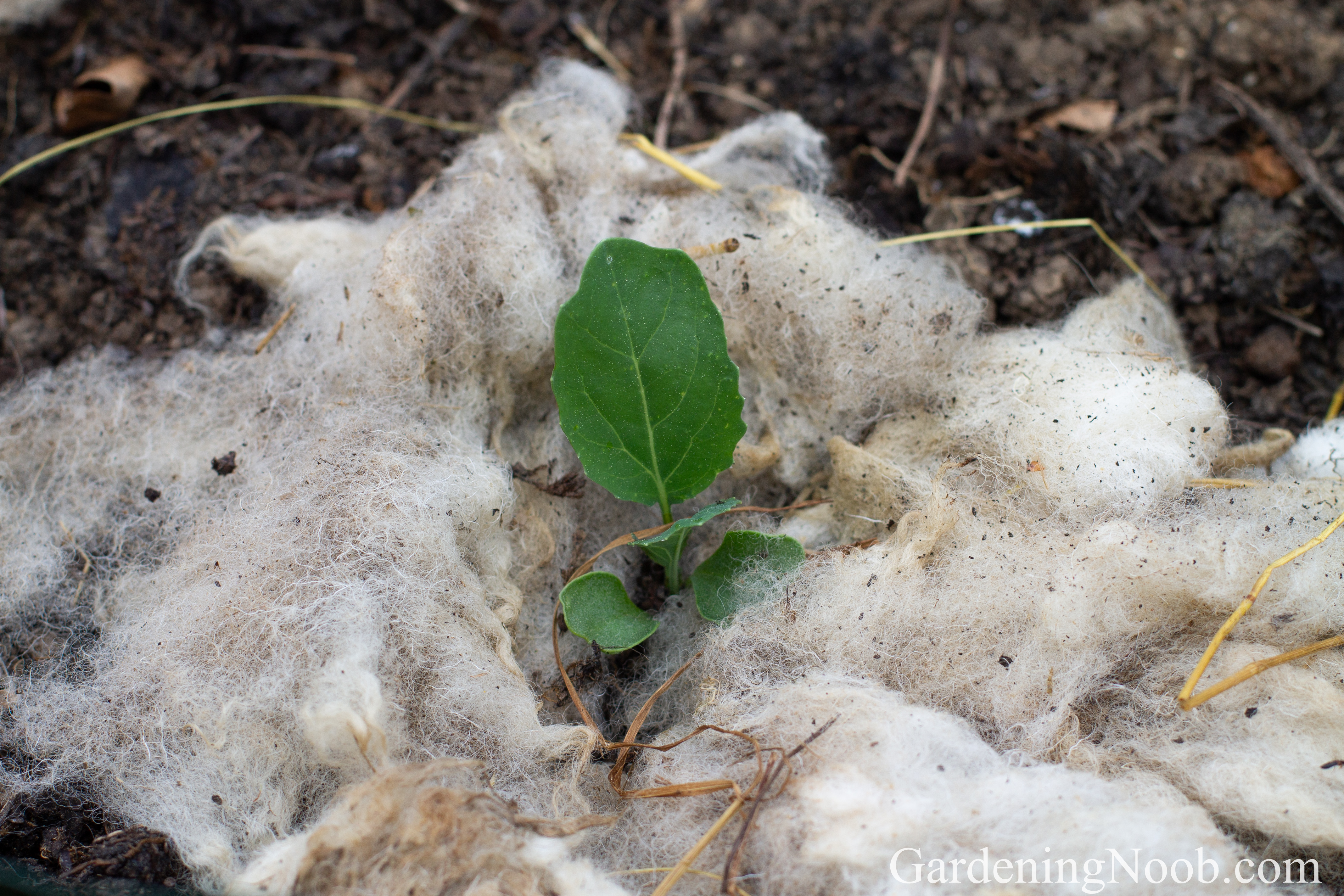
I am glad I made that decision. After I gave it a try and have seen what it can do for me, I can honestly say that it is one of the best organic materials I have ever used in my vegetable garden up until today. It definitely works!
First off all, it is very versatile. You can use it and benefit from it in numerous ways. And second of all, it is immensely powerful when it comes to enhancing the soil in the garden:
- The soil is able to retain more water. Sheep wool has great water soaking properties and can thus act as a soil’s self-functioning water storage system. It “traps” the moisture after rain and then slowly releases it back to plants during dry spells.
- The soil becomes more aerated. Incorporating this organic material into the ground is like creating air pockets in the soil. The soil immediately becomes more loose and is able to “breathe” better. Plants thus have more oxygen available and can also grow deeper and stronger roots.
- The soil becomes more lively. By retaining more water and increasing oxygen in the soil, sheep wool helps create a perfct environment for beneficial microbes, microorganisms as well as insects and bugs. These love to live in a moist and loose soil which is rich in oxygen and decomposting organic matter.
- The soil becomes more fertile. The sheep wool is incredibly rich in all sorts of nutrients such as nitrogen, phosphorus, potassium, calcium, magnesium, iron and sulfur. Once it breaks down, it releases all these nutrients into the soil and thus feeds the vegetable plants.
I’m sure you can imagine how much easier it is to grow vegetables in such fertile and lively soil. The plants thrive in it. They are healthier, stronger and grow faster. And most importantly, they also produce more harvest!
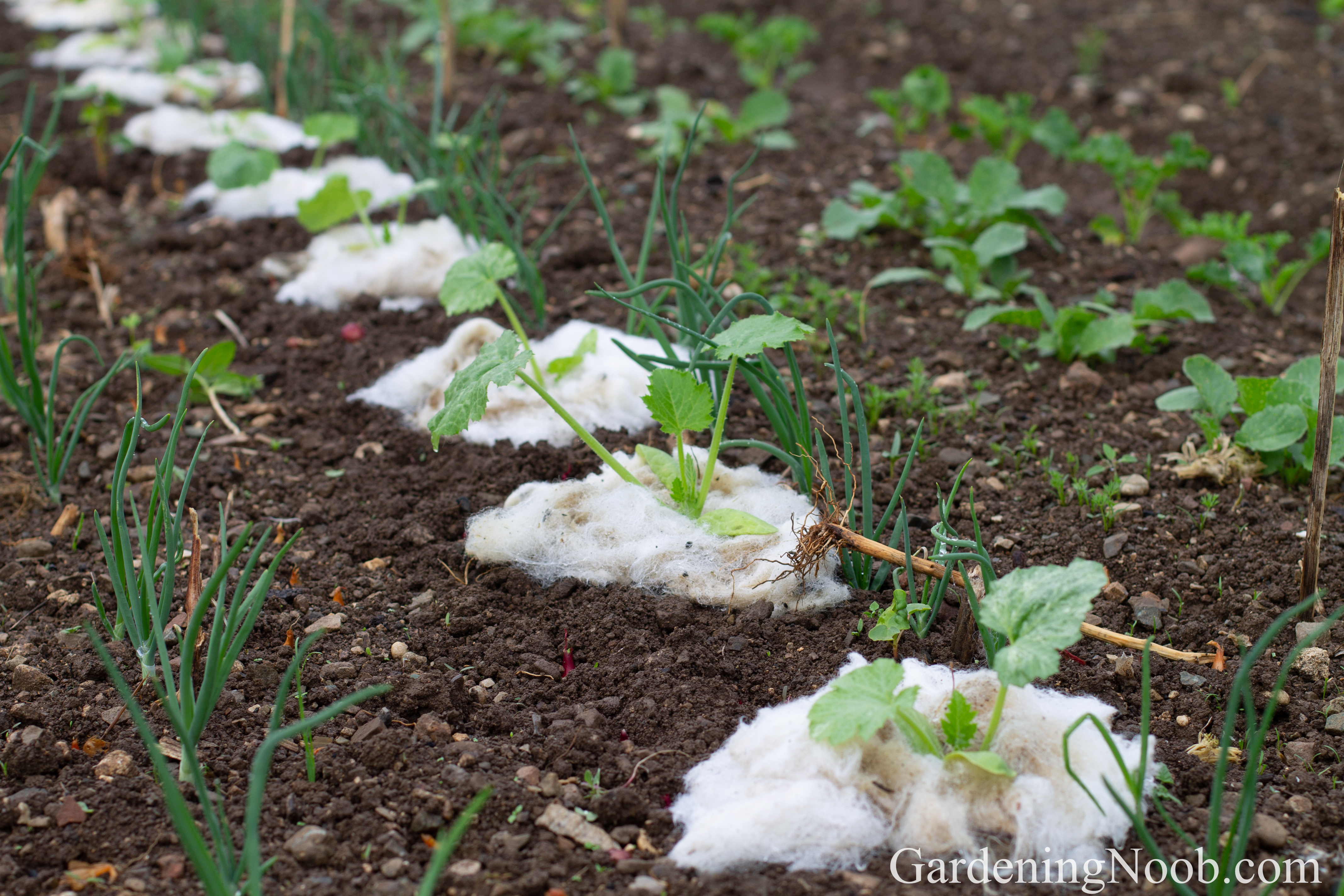
Of course, these positive changes do not occur overnight. In my case, the soil’s water and oxygen holding capacities did increase shortly after, but everything else took much more time. I had to wait for the sheep wool to (at least partially) brakdown before I could expect the soil to become more lively and more fertile – which took several months.
How am I using it?
There are two different ways in which I use sheep wool in my vegetable garden:
I incorporate it in the soil.
I put a handful of sheep wool into each transplant hole just before I place a vegetable seedling in it so that the wool sits directly underneath the seedling’s roots. It helps keep my seedlings hydrated at first, but later on, once it starts breaking down, it also feeds them with food and thus speeds up their growth…
Be aware though that wool is a slow-release fertilizer. It’s breakdown – and it’s release of nutrients into the soil – is lengthy and gradual. As you’ll discover later on, it takes about a year to fully decompose. That’s why I only do this when transplanting long-maturing vegetable seedlings such as broccoli, cabbage, cauliflower, peppers, tomatoes and eggplants. The fast-growing and quick-maturing vegetables such as lettuce, radishes, bush beans and peas would be ready for harvest way before the wool started to break down. They do benefit from it the next season though because I do practice crop rotation.
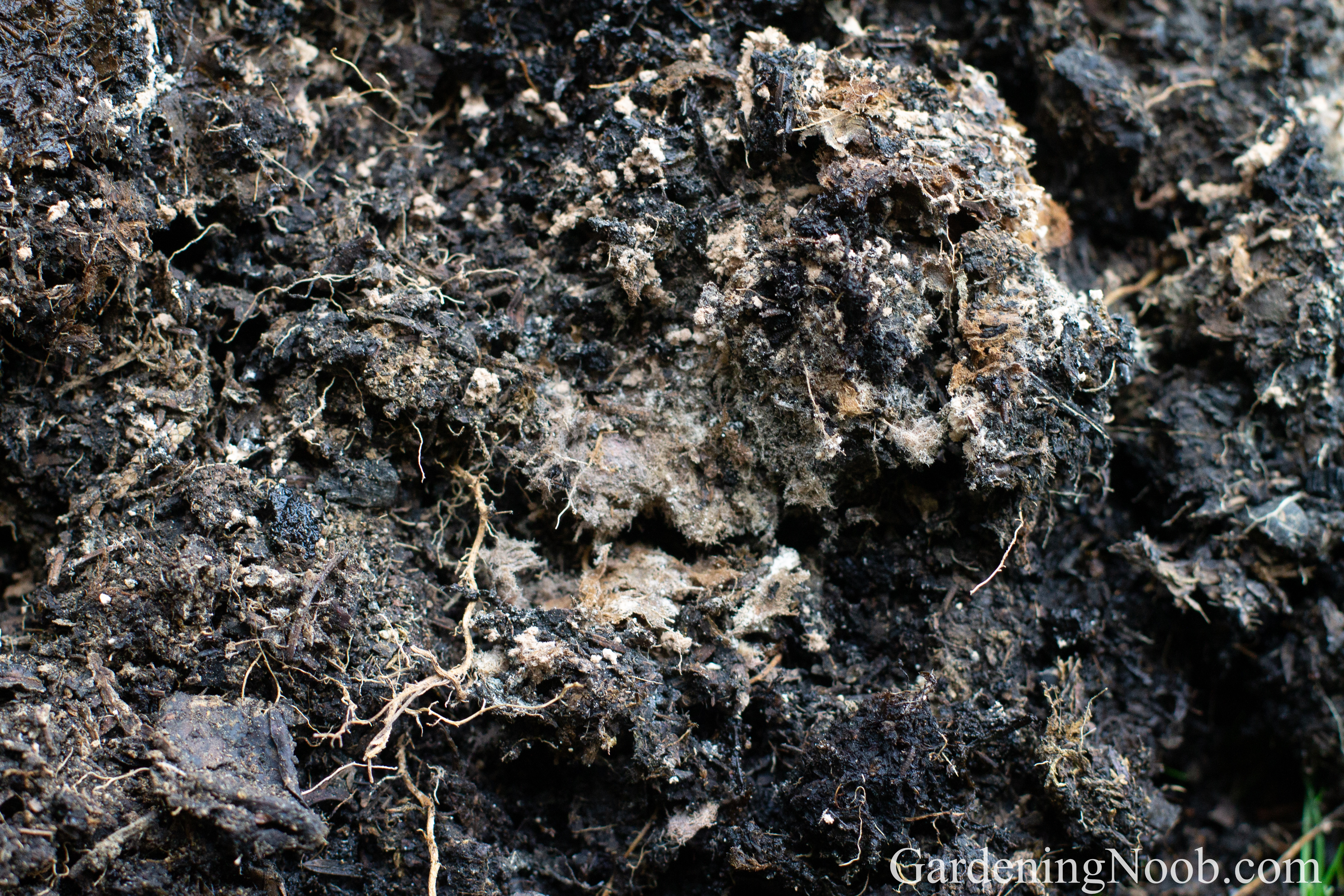
Alternatively, I could also incorporate it into the soil with shoveling, spading, tilling or plowing. However, I am more of a no-till gardener and don’t like to disrupt the soil. It would still work though. As long as you get it into the ground, the soil will benefit from it.
I do, however, throw some wool onto my compost pile every now and then. The compost benefits from it in a similar way the soil does. It adds nutrients to it, keeps it moisturized and aerated and stimulates life in it. I consider it to be a “green” material and thus mix it with leaves which are considered a “brown” material.
I use it as a mulch.
Another thing I do with this precious organic matter in my vegetable garden is use it for mulching. Thanks to its well-known insulating properties, sheep wool as a mulch protects the soil from overheating during long, hot and sunny summer days. And it also keeps it warmer during cool early spring and late autumn nights…
But the best part about it is that it takes a very, very, very long time to break down when you leave it on the surface. It’s very durable – it takes more than a year for it to completely disappear – while at the same time offers all the standard benefits of mulch such water preservation, weed control, temperature regulation, protection of life in the soil, etc. The wind does not blow it away either. If you ask me, it is a perfect mulching material!
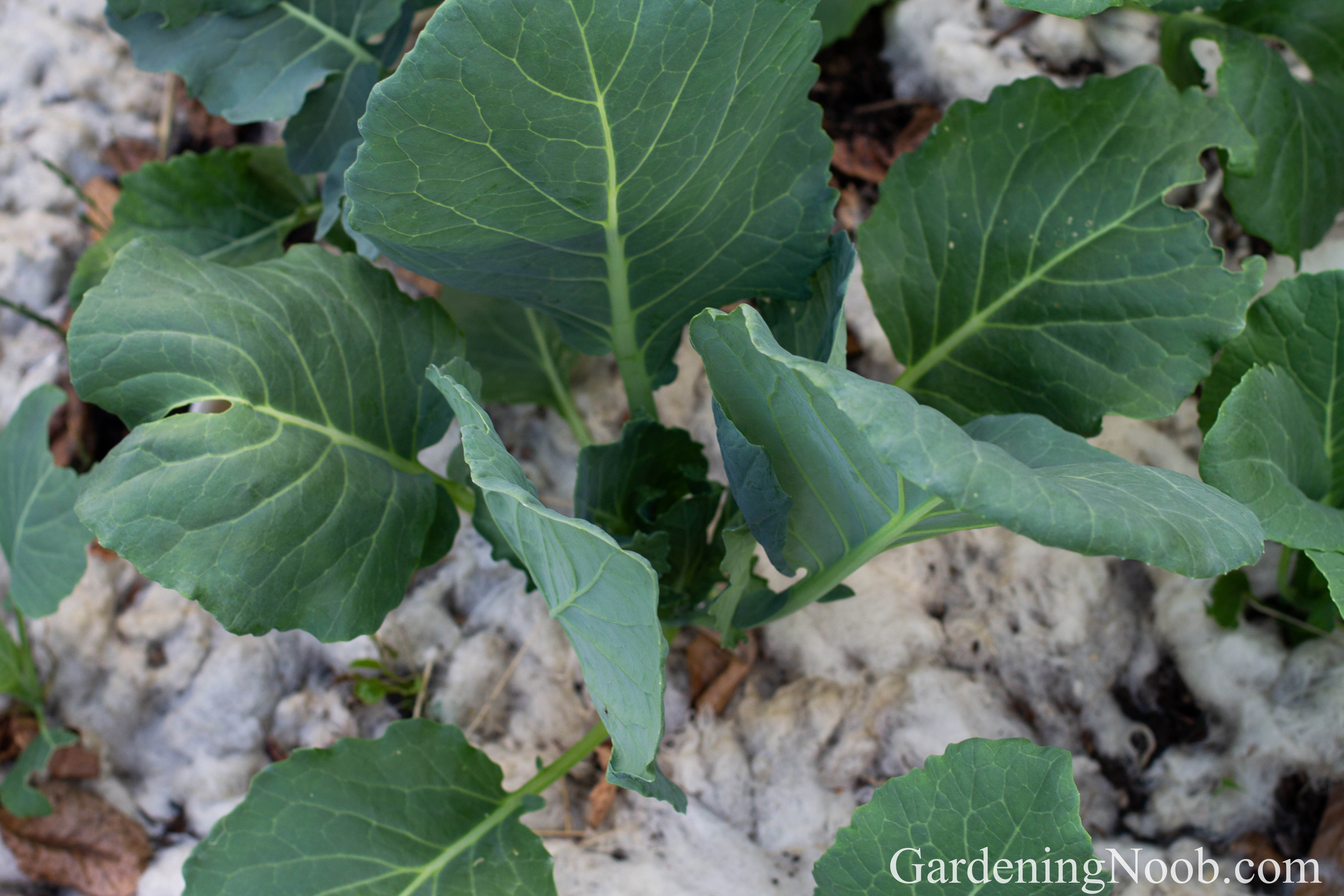
So, once I transplant my vegetable seedlings to the garden, I cover the bare soil around them with a layer of sheep wool which is about one inch (two to three centimeters) thick. I always try to cover as much bare ground as I can, but unfortunately, I don’t always have unlimited amounts of wool available.
In this case too, I rarely mulch the fast-maturing or grown-from-seed vegetables (such as lettuce, radishes, bush beans, carrots and peas for instance) in their early growth stages with it. The material is just too sturdy. It is difficult and time-consuming to first separate it into tiny particles and then place it around those baby plants that have just sprouted.
Does it repel slugs, snails and other pests?
I have always struggled with slugs and snails in my garden. Those slimy little devastation-bringing monsters take a big toll on my vegetable plants each year. When I started using sheep wool, I was hoping that it would somehow stop them. But to my disappointment, it did very little to deter them from attacking my plants…
While it did have some stopping effect at first, it lost all it’s slug repellent powers soon after it rained. I guess the rain washed off all the oils and all the smell that could have made a difference in the long run. And, once it was smell-free and oil-free, the slugs were no longer repelled by it and even found shelter in it.
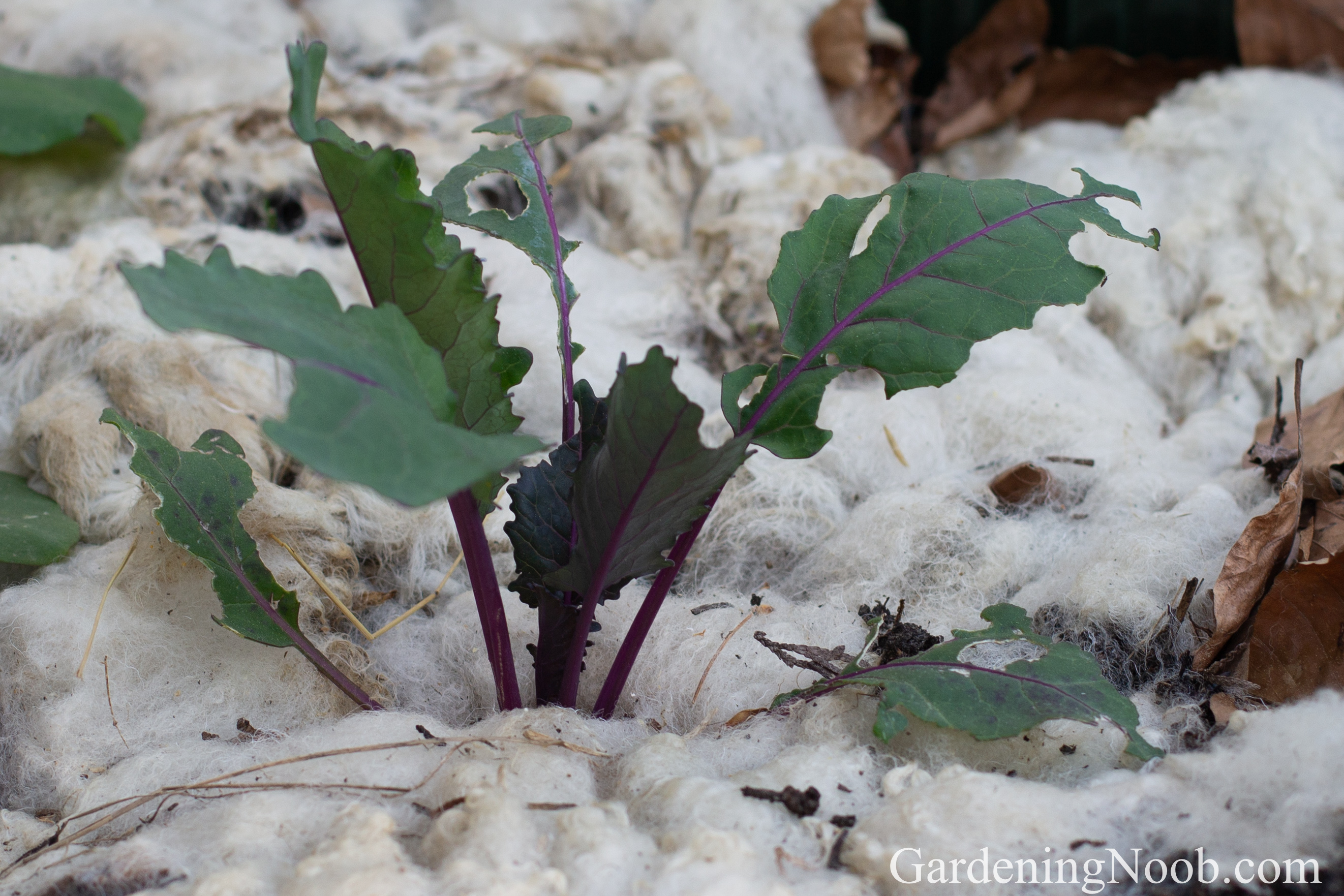
Another pest that I constantly have problems with are meadow voles (field mouses). These hairy, cute-looking little rodents love to nibble on roots of my vegetable plants – especially early in spring when there’s a shortage of other plants available. I have lost a countless number of seedlings as well as mature plants because of them…
Essentially, the voles live in the ground. They create a web of underground tunnels and then move through them in search for the food. I was hoping that the wool I placed underneath the seedlings’ roots during transplantation would deter them from killing my plants. It probably did to some degree, but nowhere near to the extent I was aiming for.
On the positive note, it seems that this organic material has kept deer and does out of the garden. Prior to using it, these had been munching on my lettuce, radicchio, chinese cabbage and other leafy greens every autumn – I guess due to lack of other food available in the nearby forrests. This changed when I have started using wool as a mulch. Of course, it could be a coincidence, but I’m guessing the smell must have kept them away – or at least divert them to nearby allotments.
How long does it take for it to decompose?
Ever since I first blogged and published the video about it, I have been getting questions about how fast does sheep wool biodegrade in the soil. It therefore makes sense to write something about that as well…
In my experience, when I incorporate it into the soil, it takes less than one year for it to break down completely. I know this for a fact because I checked it. I dug a hole under one of the mature leafy kale plants that had wool underneath and managed to survive the wnter. I transplanted that plant in the spring of 2020 and checked whether wool would still be there in the spring of 2021. So, approximately one year later, I was not able to find any traces of the it there anymore. It obviously decomposed entirely during that time.
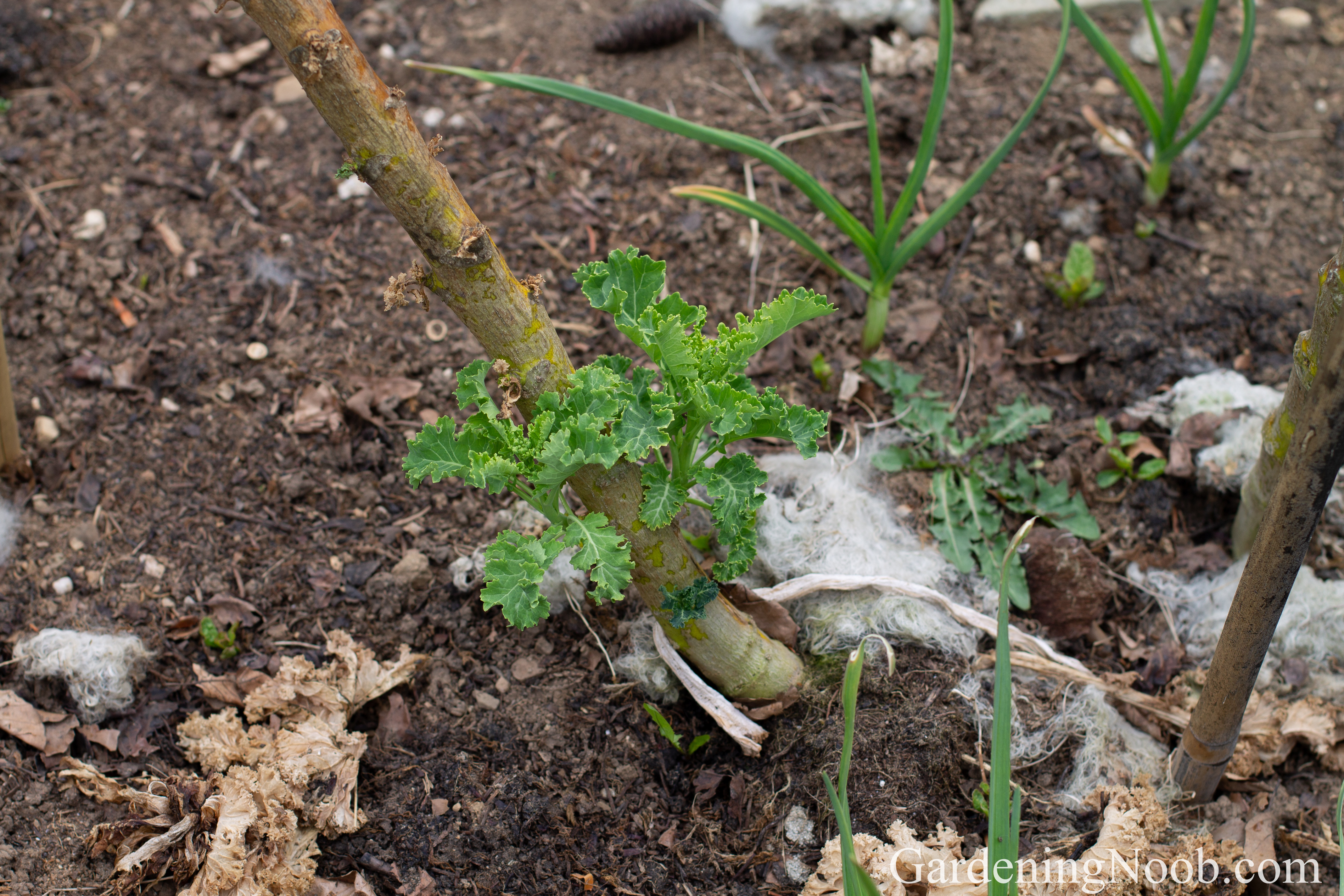
The mulch is a completely different story though. When left on the surface, the wool takes much longer to break down. Believe it or not, I can still find the one I used for mulching in the spring of 2020. It’s nowhere near worn out despite the fact that it has been more than a year since I first placed it there.
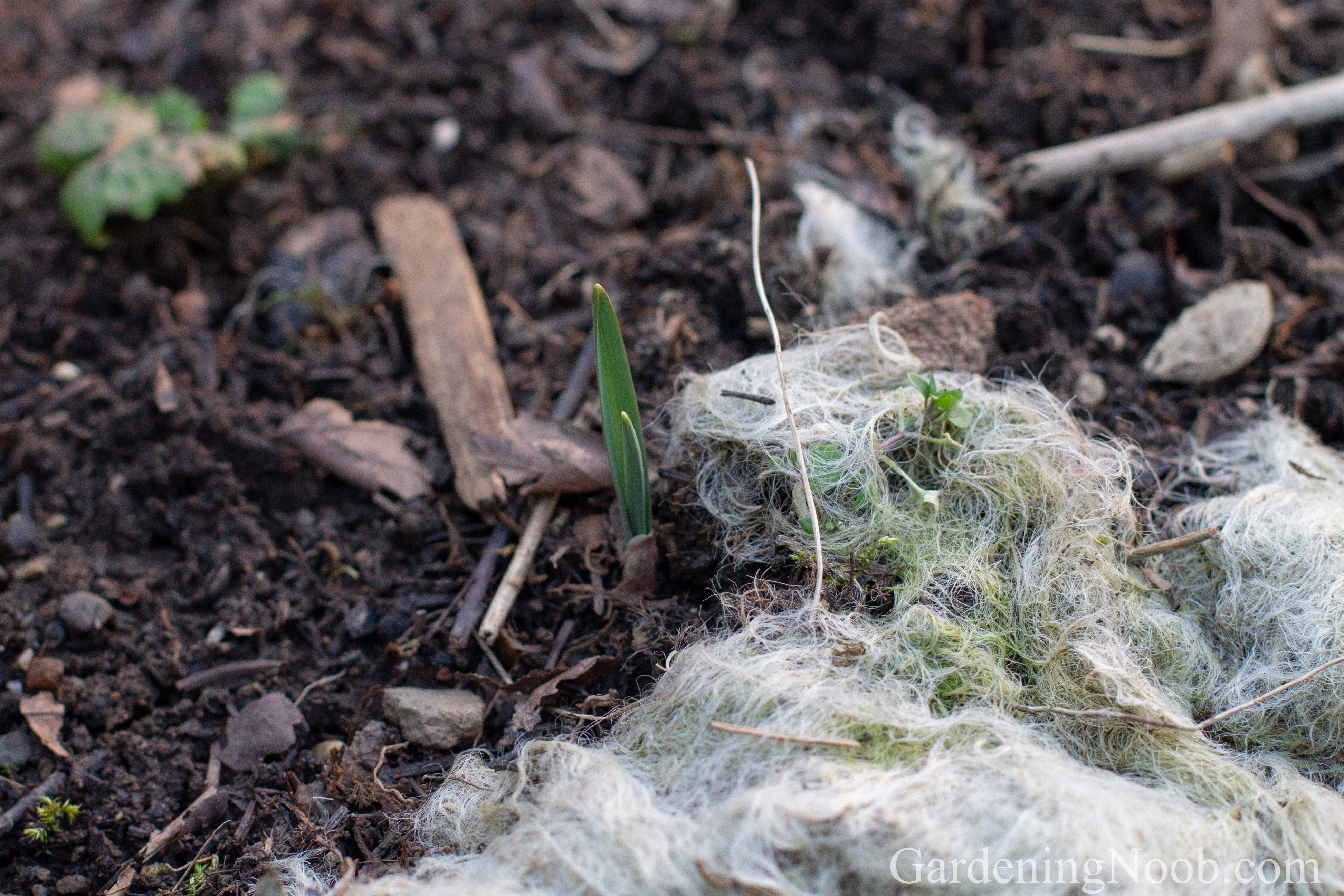
I haven’t mention this yet, but I have also been using sheep wool when growing tomatoes in pots in a similar way as in the garden. I mix some of it with the soil when putting it into the pots. And, once tomato seedlings are transplanted, I also mulch the surface of the pots with it. I do it to slow down water evaporation during those hot, summer days.
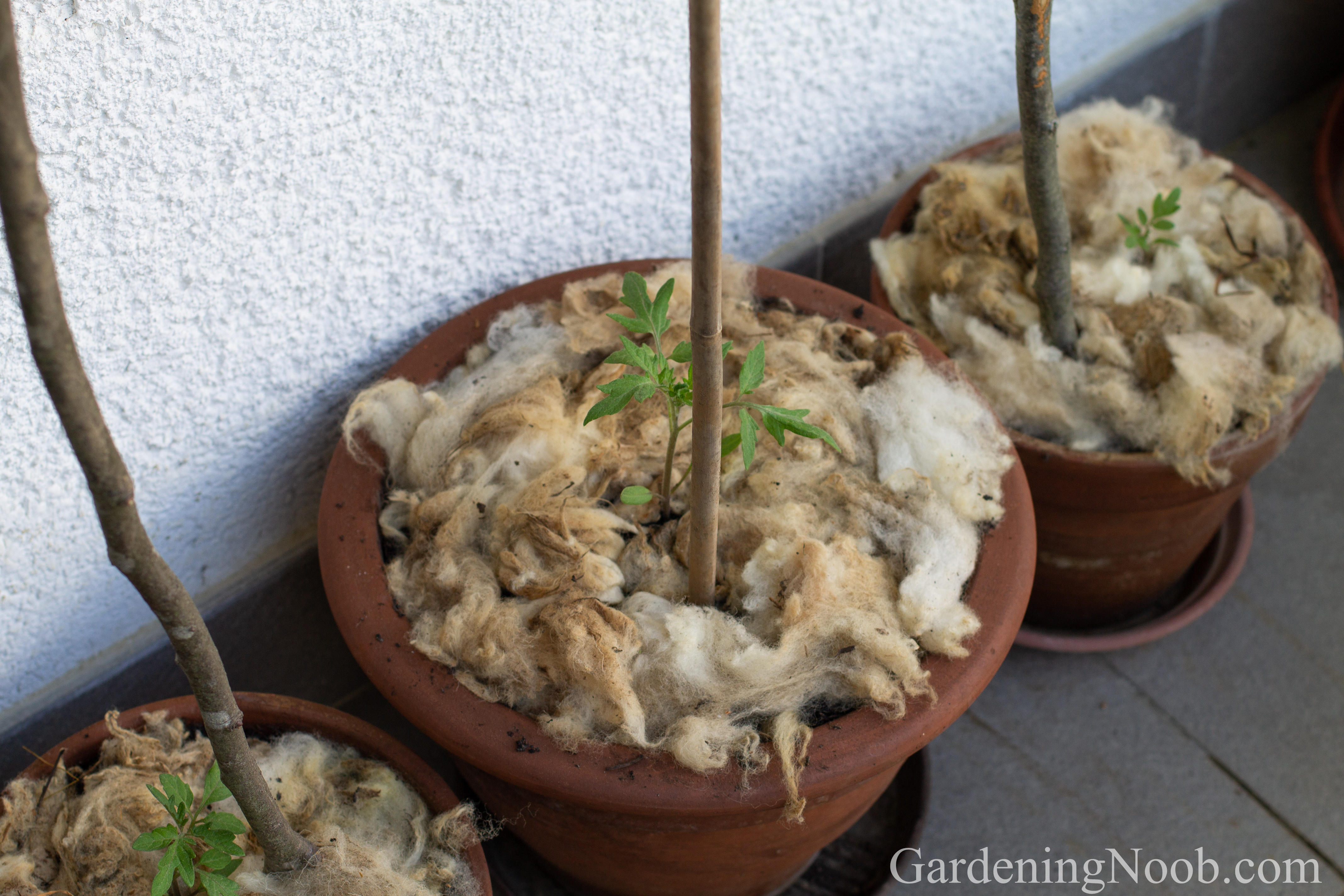
Anyways, I went ahead and I checked what had happened to the sheep wool in one of those pots after one year. I wasn’t surprised to see that the wool on the surface of the pot was more or less intact. It looked almost the same as the day I placed it there. And the one I put into the pot together with the soil was only slightly deteriorated. I could easily find decent-sized chunks of it…
It is obvous that the wool in pots and containers breaks down much slower when compared to the one in the ground. Why the differences?
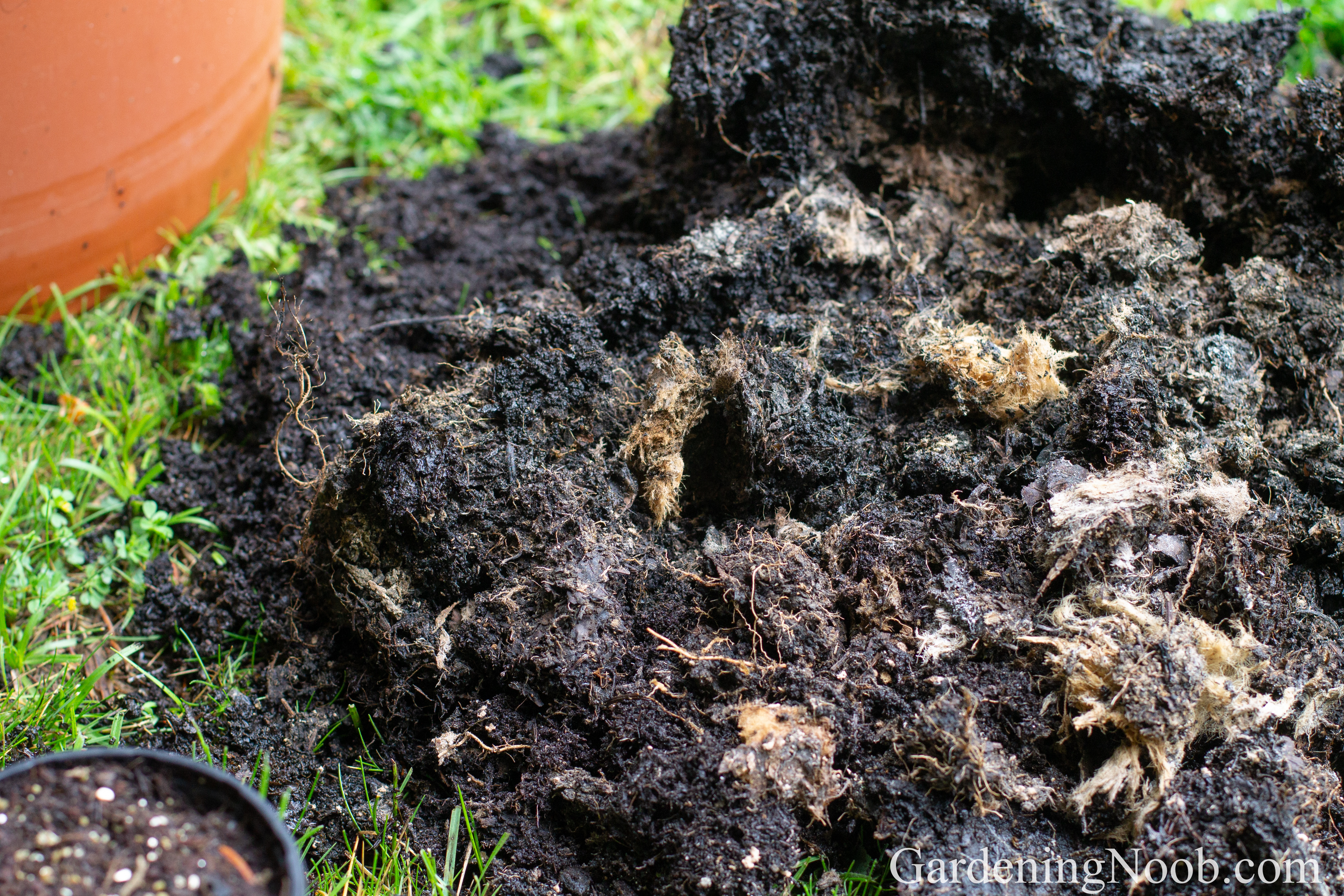
Well, I think the living environment (microbes, bacteria, earthworms, nematodes, bugs, etc…) within pots and containers is much smaller and less diverse than the one in the garden. The soil in pots and containers is also less exposed to harsh weather conditions like such as rain, wind, snow and sun. The organic matter (not just the wool) in pots and containers is therefore always going to decompose at a much slower rate.
Where to get it for vegetable gardening?
I got my first supply from a local company which manufactures products (bed linens, yarn, socks, etc…) from raw sheep wool fleeces. It was dirty, unwashed and unprocessed one. It still had that original smell to it. The smell was not unpleasant though. I could easily work with it.
I should mention that the supply I got was not free. It cost me one euro (little more than a U.S. Dollar) per kilogram (little more than a pound) plus shipping. They were selling it because not all parts of the sheep wool fleece are appropriate for product manufacturing because they contain dirt, plant residues and sheep poo. The breeders and manufacturers thus keep the best parts for themselves and discard the rest – or in my case sell it to organic vegetable growers…
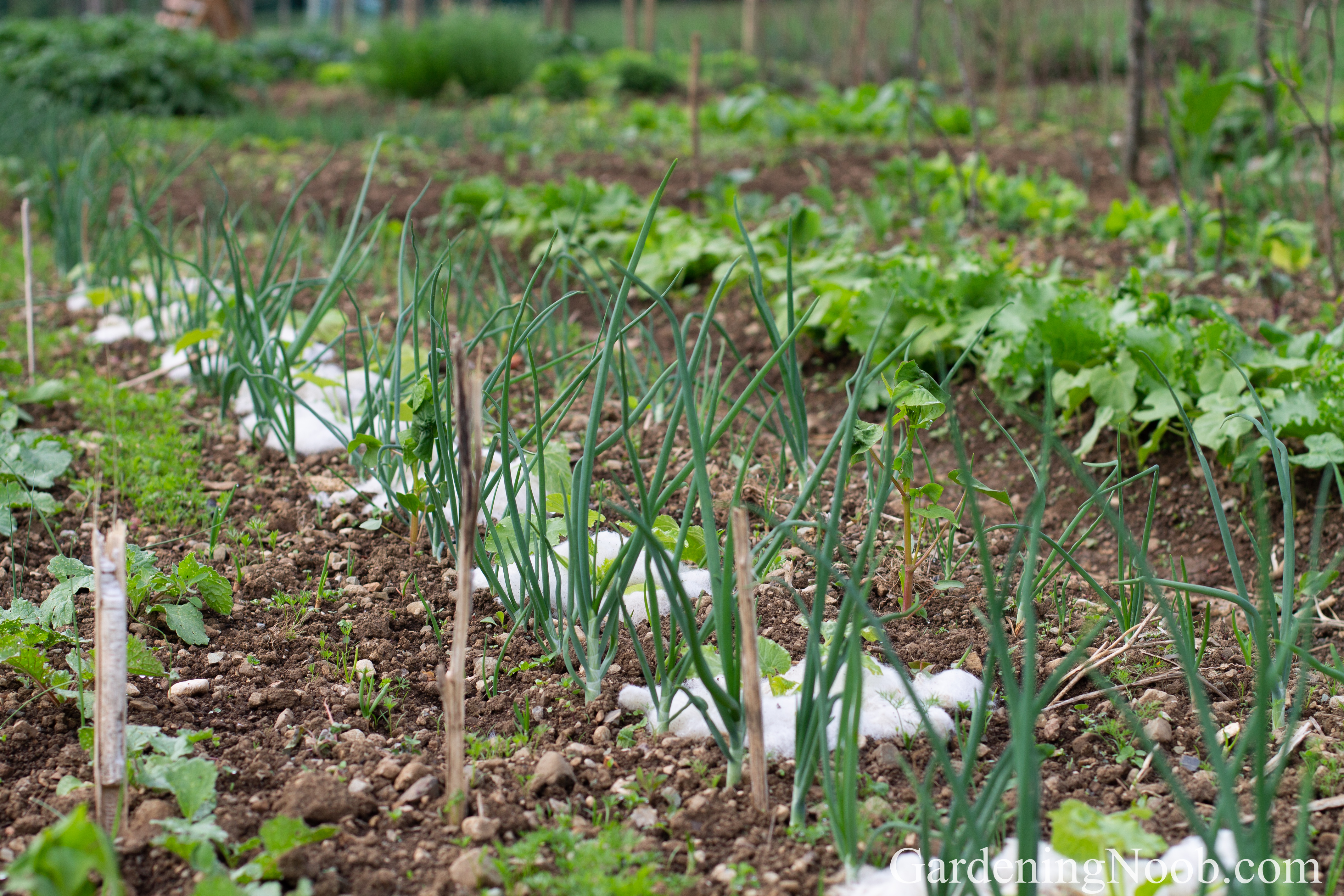
Now, once I discovered that breeders are almost always left with “waste” wool, I decided to contact the nearest one in my local area. To my surprise, he was more than happy to give it to me for free and even volunteered to supply more next year!
Perhaps I was lucky to contact him in spring which usually the time when breeders shear their sheep to prepare them for the summer heat. If you intend to do the same, then keep that in mind and don’t forget to bring your own (sturdy!) bags with you.
I think that getting it from a local sheep breeder is the best option by far. It’s (usually) free, unprocessed, extremely potent and sustainable as well. There’s nothing wrong with buying it though. You can find plenty of interesting products out there – from sheep wool garden felts and fertilizers to pellets and anti-weed mats.
Will I keep using it in the future?
I am truly impressed with what sheep wool can do for a vegetable garden. It’s a powerful, slow-release fertilizer. It’s a slow-decaying mulch. It’s a water-storage underground sponge. It’s a micro-organisms boosting organic matter. And it even deters moles, deer and does to a certain degree!
On top of that, it also fits into the permacultural philosophy and is environmentally-friendly. This is especially true when you source it directly from someone that breeds sheeps locally and in an organic way. You see, when you use something that would otherwise go to waste, you help reduce your carbon footprint, you save on water consumption, you improve the quality and the health of your soil and you eliminate the need for chemically-based fertilizers…
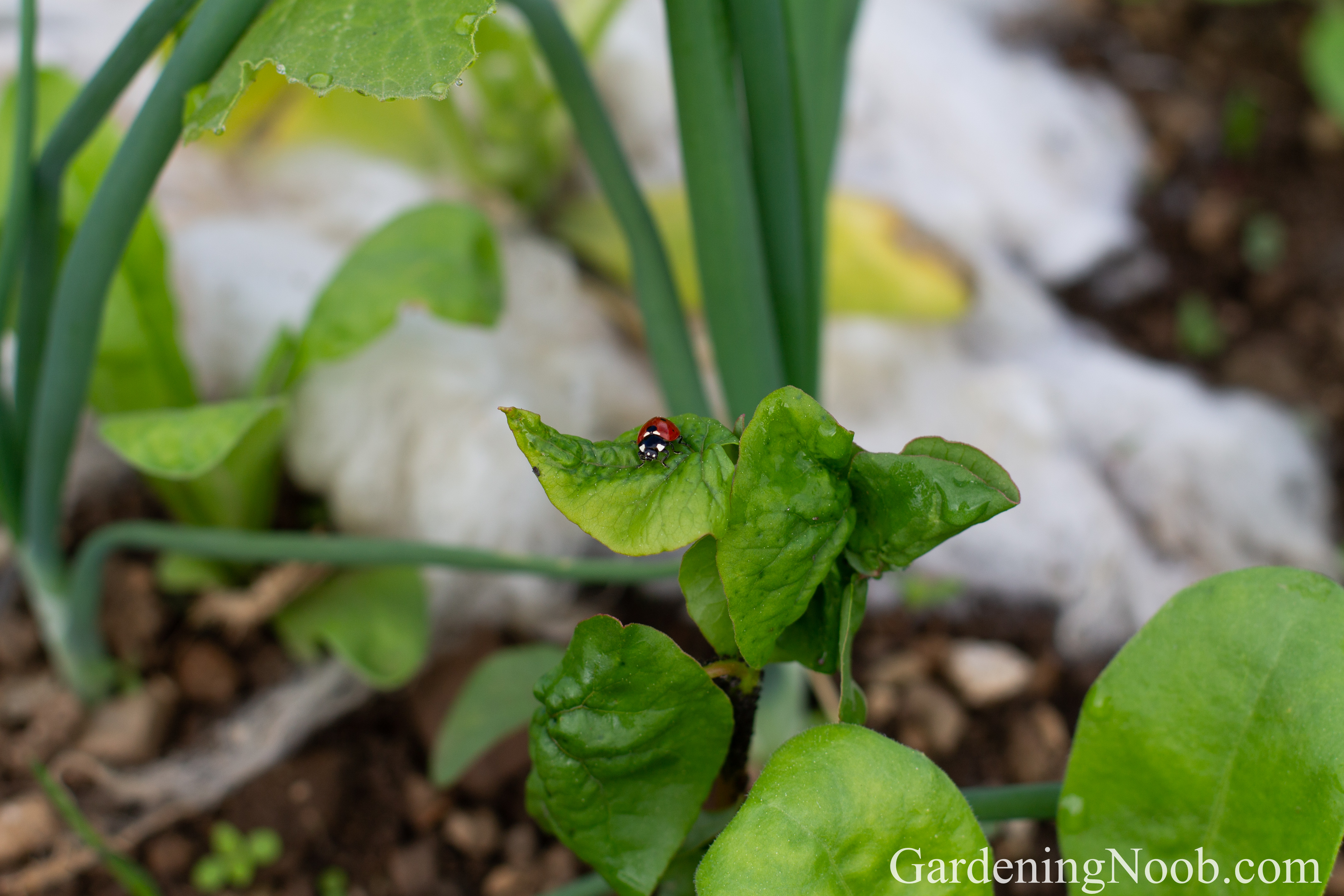
It’s a win-win – no matter how you look at it. I don’t know about you, but it is definitely going to stay in my arsenal of organic materials I use in the garden.
